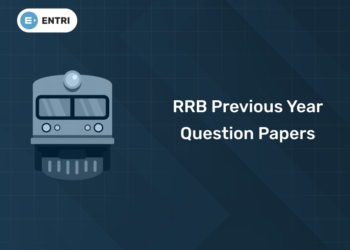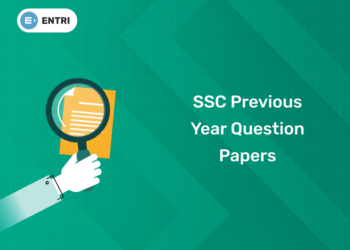Table of Contents
The Gupta Empire was an ancient Indian empire that existed from the early 4th century CE to late 6th century CE. At its peak, from around 319 to 467 CE, it covered much of the Indian subcontinent. This period is considered as the Golden Age of India by historians. The ruling dynasty of the empire was founded by the king Sri Gupta; the most notable rulers of the dynasty were Chandragupta I, Samudragupta, and Chandragupta II, also known as Vikramaditya. The 5th-century CE Sanskrit poet Kalidasa praises the Guptas with having invaded about twenty-one kingdoms, both in and outside India, including the kingdoms of Parasikas, the Hunas, the Kambojas, tribes located in the west and east Oxus valleys, the Kinnaras, Kiratas, and others.
The high points of this period are the great cultural developments that happened firstly during the rule of Samudragupta, Chandragupta II and Kumaragupta I. Many Hindu epics and literary sources, such as Mahabharata and Ramayana, were canonised during this period. The Gupta era produced scholars such as Kalidasa, Aryabhata, Varahamihira, and Vatsyayana who made great developments in many educational fields. Science and political administration reached new heights during the Gupta period. The era gave rise to accomplishments in architecture, sculpture, and painting that laid standards of form and taste that set the whole subsequent course of art, not only in India but far beyond its borders. Strong trade ties also made the region an important cultural centre and established the area as a base that would affect nearby territories and places in India and Southeast Asia. The Puranas, earlier long poems on a variety of subjects, are also thought to have been committed to written texts around this period. Hinduism was followed by the rulers and the Brahmins grew in the Gupta empire but the Guptas accepted people of other faiths as well.
Attempt Free GK Test! Download Entri App!
The empire eventually died out because of factors such as substantial loss of territory and imperial authority caused by their own erstwhile feudatories, as well as the invasion by the Huna peoples (Kidarites and Alchon Huns) from Central Asia. After the collapse of the Gupta Empire in the 6th century, India was again ruled by numerous regional kingdoms.
Grab Latest Study Materials! Register Here!
FOUNDER OF GUPTA EMPIRE
By the end of his rule, his kingdom extended west to the present-day city of Allahabad and included Ayodhya and southern Bihar. These regions were alloted to him by the Puranas (ancient chronicles of early Sanskrit literature). His supremacy must have been very large to explain his assumption of the imperial title, maharajadhiraja (“king of kings”), and to enable his son Samudra Gupta to begin the conquest that led to the founding of the Gupta empire.
Grab Latest Study Materials! Register Here!
GOLDEN AGE OF INDIA
1: Who was the first woman President of India?
The period between the 4th and 6th centuries is known as the Golden Age of India because of the considerable achievements of Indians in the fields of mathematics, astronomy, science, religion and philosophy during the Gupta Empire. The decimal numeral system, including the concept of zero, was invented in India during this period. The peace and prosperity created under the leadership of the Guptas enabled the pursuit of scientific and artistic endeavors in India. The Golden Age of India came to an end when the Hunas invaded the Gupta Empire in the 6th century CE.
Grab Latest Study Materials! Register Here!
Maharaja Sri Gupta (204 -280 CE)
He was the founder of the Gupta Dynasty, being a Hindu he planned the building of a temple strategically to collect revenues from the Buddhist pilgrims, which led to the economic growth of the Empire.
Maharaja Sri Ghatotkacha (280–319 CE)
He engaged in marriage proposals with powerful families in the region through cross-cultural marriage like marriage to a Licchhavi princess. Through such marriages, he contributed to the political development of the Gupta Dynasty. His pursuit to extend the administrative kingdom was achieved by his son and heir Samudraupta.
Attempt Free GK Test! Download Entri App!
Samudraupta (335-380CE)
He was a man of great ability, a fighter, and a statesman. He invaded the nearby neighbors with his well-trained armed forces, thus bringing control over the Indian Subcontinent. He had a powerful navy. He attained control of the primary source of income in the region, which gave him control of the North Indian trade, and the Ganges river basin. It is during his period of influence that the Golden Age of India got enlarged. Like his father, he strengthened the kingdom by letting his son to marry a Naga princess, and at the same time his daughter was married to a Vatika king. By this, they were venturing into control of strategic geographical locations. He is mainly known for the art of coinage. He also accepted other religions, unlike his predecessors. He was succeeded by his son Ramagupta, who was assassinated by Chandragupta II.
Grab Latest Study Materials! Register Here!
Chandragupta II (380–413/415 CE)
During his rule, the Gupta Dynasty reached its peak. He attained his success by marital alliances and enmity policies by which he killed the enemy rulers when he went hidden as a queen. The large numbers of silver produced during his period and the iron pillar of Delhi is a mark of his amazing achievements.
Free UPSKILLING Courses!
Take your first step toward mastering in-demand skills, acing interviews, and securing top-tier jobs with Entri's free upskilling courses.
Start Learning!The Fall Of The Gupta Dynasty
After Chandragupta II, Gupta dynasty started falling down. The economic, religion and political establishment scared by conquerers from various beliefs, such as Christians and Buddhists, external factors such as economic rivalry and internal rebellion, Civil Wars, and the financial drain associated with the weak leadership made Gupta dynasty weak. Stability was ruined by all these factors which led to the final fall of the dynasty. However, some of the artistic of the Gupta dynasties still exist in India to date and act as tourist attraction sites.
The Golden Age Of India
| Rank | Ruler | Period of Rule |
|---|---|---|
| 1 | Sri Gupta | (240–280 CE) |
| 2 | Ghatotkacha | (280–319 CE) |
| 3 | Chandragupta I | (320–335 CE) |
| 4 | Samudragupta | (335–380 CE) |
| 5 | Ramagupta | Data Not Available |
| 6 | Chandragupta II | (380–413/415 CE) |
| 7 | Kumaragupta I | (415–455 CE) |
| 8 | Skandagupta | (455–467 CE) |
| 9 | Purugupta | (467–473 CE) |
| 10 | Kumaragupta II | (473–476 CE) |
| 11 | Budhagupta | (476–495 CE) |
| 12 | Narasimhagupta | Data Not Available |
| 13 | Kumaragupta III | Data Not Available |
| 14 | Vishnugupta | (540–550 CE) |
| 15 | Vainyagupta | Data Not Available |
| 16 | Bhanugupta | Data Not Available |
Grab Latest Study Materials! Register Here!
POST GUPTA PERIOD
Political situation became complex with the passing away of the Guptas and the demise of the Vakataka rulers. Vassals of the Guptas became independent in the North. In the Deccan and far South too multiplicity of powers was witnessed. Post Gupta Period was very turbulent in nature. Five major powers immersed in north India after the fall of the Guptas. These powers were: The Hunas, The Maukharis, The Maitrakas, The Pushyabhutis, The Gaudas.
The Hunas:
The Hunas were a rare race of Central Asia who came to India. During the rule of Kumargupta, Hunas conquered India for the first time. They could not succeed in India under the dynasty of Kumargupta and Skandagupta, though they could get into India. Hunas inhabited India for a very short period of thirty years. Hunas’ dominion was set up in North India. Toramana was the best ruler and Mihirakula was the most powerful and cultured one.
Attempt Free GK Test! Download Entri App!
The Maukharis:
The region of Western Uttar Pradesh around Kanauj was detained by the Maukharis. They also invaded some parts of Magadha. Slowly they overthrew the later Guptas and made them move to Malwa.
The Maitrakas:
Most probably the Maitrakas were Iranian in origin and ruled in Saurashtra region of Gujarat with Valabhi as capital. Valabhi became centre of learning, culture and trade and commerce under the guidance of Bhatarka. It survived the longest Arab attacks.
The Pushyabhutis:
Thaneswar (north of Delhi) was the capital of Pushyabhutis. Prabhakarvardhan was the most important ruler of the dynasty who assumed the title of Parambhattaraka Maharajadhiraja. They had a marriage alliance with the Maukharis. The marriage alliance strengthened the two empires. Harshavardhana belonged to this clan.
The Gaudas:
They ruled over a territory in Bengal and were quite lesser-known of the four kingdoms. It’s most powerful and ambitious ruler was Sasanka. He invaded Makhauris, killed Grahavarman and detained Rajyasri.
Grab Latest Study Materials! Register Here!
Post Gupta Period:Harshavardhan’s dynasty
Harshavardhan (606-647 A.D.):
Harshavardhan ruled nearly 1400 years ago. Several historical sources which deal with Harshavardhan’s rule are:
Hieun Tsang: composed Si-Yu-Ki.
Bana Bhatt: Harshacharita (an account of Harsha’s rise to power/ biography of Harshavardhan in Sanskrit), Kadambri and Parvatiparinaya.
Harsha’s own drama: Ratnavali, Nagananda and Priyadarsika about political conditions. Harsha also patronised Haridatta and Jayasena.
Grab Latest Study Materials! Register Here!
Harsha’s Rise to Power
After the death of his elder brother Rajyavarman Harsha got into the throne in 606 A.D. and led an army against the ruler of Bengal to revenge his brother’s death and also to free his sister. He was failed in his first mission against Gaudas, but soon extended his empire.
Harsha was generally regarded as the last great Hindu emperor of India. But he was not devoted Hindu ruler. He has limited his power up to north of India except Kashmir, Rajasthan, Punjab, Uttar Pradesh, Bihar and Orrisa were under his direct control.
Administration of Harshavardhan:-
Official Area of administration
Mahasandhi Vigzahak Officer to decide about war and peace
Mahabaladhikrit Highest official of the Army
Baladhikrit Commander
Ayuktak Ordinary officer
Vrihadeshwawar Head of Cavalry
Doot Rajastharuya Foreign Minister
Katuk Head of elephant brigade
Uparik Maharaj Provincial head
Grab Latest Study Materials! Register Here!
The Vakataka Empire
The Vakataka Empire was based in the Deccan in the mid-third century AD. The state extended from the southern edges of Malwa and Gujarat in the north to the Tungabhadra River in the south as well as from the Arabian Sea in the western to some parts of Chhattisgarh in the east. Vakatakas were successors of the Satavahanas in the Deccan and contemporary of the Guptas in northern India.
The founder of the dynasty was Vindhyaaakti (250AD-270AD), whose name is derived from the name of the goddess Vindhya after whom the mountains were named.
The Chalukyas
Chalukyas ruled from Raichur Doab which was situated between the rivers of Krishna and Tungabhadra. Aihole (city of temples) was the first capital of Chalukyas and it was centre of trade which was later developed into religious centre having number of temples around. The capital of Chlukyas was later moved to Badami during Pulakesin I. Badami is also known as Vatapi.
The Pallavas
Capital of this kingdom was Kanchipuram and which was spread around Kaveri delta. The Pallavas established a powerful kingdom in South India after the fall of Satvahans and ruled from sixth century to late eighth century. They moved into Andhra and then to Kanchi where they established the mighty Pallava Empire.
Grab Latest Study Materials! Register Here!
Origin of Pallavas
There are controversies with regard to the origin of the Pallavas. Important among them are as follows
• Possibly they were the descendents of the Greek Parthians who came to India after Alexander’s invasion.
• Might be they belonged to a local tribal clan who established their authority in Tondainnadu or the land of creepers.
• They originated from Chola –Naga’s marriage
• They were orthodox Brahmans of the North and their capital was Kanchi.
Grab Latest Study Materials! Register Here!
Important Rulers of Pallava Dynasty
Simhavishnu: He was the first important ruler of this kingdom. Simhavishnu seized the territory of the Cholas and later humiliated other southern regions including Ceylone.
Mahendravarman I: Pulakeshin II defeated him. Saint Appar and scholar Bharavi was patronised by him. Mahendravarman I composed ‘Mattavilasaprahasan’ a satirical play.
Narasimhavarman I: He was famous for his victory over Pulakeshin II and also assassinating and seizing Pulakeshin II’s Empire. He got the title of Vatapikonda (the conquerer of Vatapi). Later Cholas, Cheras and Pandyas were defated by Narasimhavarman I. Hiuen Tsang visited Kanchipuram during his reign. Narasimhavarman I built the city of Mahabalipuram (Mamallapuram) and famous monolithic (tomb made up of single stone) rock-cut temples. Two naval expeditions were sent to Ceylon.
Mahendravarman II: He was assassinated by Vikramaditya I.
Other Pallava kings included Paramesvaravarman I, Narasimhavarman II, Paramesvaravarman II and Nandivarman II.













